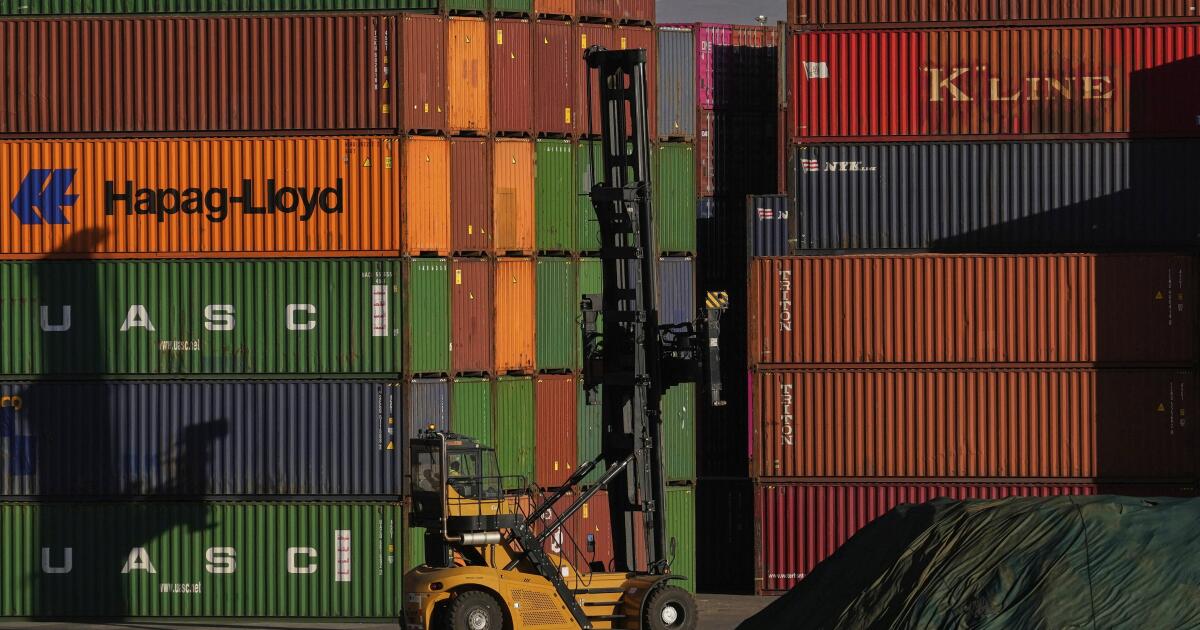U.S. tariffs put 30,000 South African jobs at risk, officials say
JOHANNESBURG — U.S. reciprocal tariffs have put an estimated 30,000 jobs at risk, South African authorities said Monday, four days before a 30% U.S. tariff on most imports from South Africa kicks in.
South Africa was slapped with one of the highest tariff rates by its third-largest trading partner — after China and the EU — creating uncertainty for the future of some export industries and catapulting a scramble for new markets outside the U.S. Tariffs come into effect on Aug. 8.
In an update on mitigation measures, a senior government official warned that an estimated 30,000 jobs were in jeopardy if the response to the higher tariffs was “mismanaged”.
“We base this on the ongoing consultations that we have with all the sectors of the economy from automotive, agriculture and all the other sectors that are going to be impacted,” said Simphiwe Hamilton, director-general of the Department of Trade, Industry and Competition.
South Africa is already grappling with stubbornly high unemployment rates. The official rate was 32.9% in the first quarter of 2025 according to StatsSA, the national statistical agency, while the youth unemployment rate increased from 44.6% in the fourth quarter of 2024 to 46,1% in the first quarter of 2025.
In his weekly public letter on Monday, President Cyril Ramaphosa said that South Africa must adapt swiftly to the tariffs since they could have a big impact on the economy, the industries that rely heavily on exports to the U.S. and the workers they employ.
“As government, we have been engaging the United States to enhance mutually beneficial trade and investment relations. All channels of communication remain open to engage with the US,” he said.
“Our foremost priority is protecting our export industries. We will continue to engage the US in an attempt to preserve market access for our products.”
President Trump has been highly critical of the country’s Black-led government over a new land law he claims discriminates against white people.
Negotiations with the U.S. have been complicated and unprecedented, according to South Africa’s ministers, who denied rumors that the lack of an ambassador in the U.S affected the result of the talks. The Trump administration expelled Ebrahim Rasool, South Africa’s ambassador to Washington, in mid-March, accusing him of being a “race-baiting politician” who hates Trump.
International Relations Minister Ronald Lamola highlighted that even countries with ambassadors in the U.S. and allies of Washington had been hard hit with tariffs. However, Lamola confirmed that the process of appointing a replacement for Rasool was “at an advanced stage”.
The U.S. accounts for 7.5% of South Africa’s global exports. However, several sectors, accounting for 35% of exports to the U.S., remain exempt from the tariffs. These include copper, pharmaceuticals, semiconductors, lumber products, certain critical minerals, stainless steel scrap and energy products remain exempted from the tariffs.
The government has been scrambling to diversify South Africa’s export markets, particularly by deepening intra-African trade. Countries across Asia and the Middle East, including the United Arab Emirates, Qatar, and Saudi Arabia have been touted as opportunities for high-growth markets. The government said it had made significant progress in opening vast new markets like China and Thailand, securing vital protocols for products like citrus.
The government has set up an Export Support Desk to aid manufacturers and exporters in South Africa search for alternate markets.
While welcoming the establishment of the Export Support Desk, an independent association representing some of South Africa’s biggest and most well-known businesses called for a trade crisis committee to be established that brings together business leaders and government officials, including from the finance ministry.
Business Leadership South Africa said such a committee would ensure fast, coordinated action to open new markets, provide financial support, and maintain employment.
“U.S. tariffs pose a severe threat to South Africa’s manufacturing and farming sectors, particularly in the Eastern Cape. While businesses can eventually adapt, urgent temporary support is essential,” said BLSA in a statement.
Gumede writes for the Associated Press.


